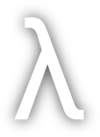What is ScyllaDB?#
ScyllaDB is a NoSQL database that a lot of high-scale companies have been switching to lately (including Discord, notably). While ScyllaDB is written in Rust, it is possible to use it with Scala 3.
The ScyllaDB docs mention using phantom (originally intended for Cassandra). However, phantom is not currently compatible with Scala 3 as it makes use of Scala 2 macros, which would have to be re-written for Scala 3’s new macro system. ScyllaDB does work quite well with Scala 3 using the Scylla Java drivers.
This post is about local development with ScyllaDB and Scala 3. I plan to write a post soon about deploying ScyllaDB to AWS for production.
I took an interest in ScyllaDB because I had to work with DynamoDB last year and the experience was quite painful. Perhaps I’ll write another article on all the pain points later (and why I think DynamoDB is not production-ready software), but in this post I’m focused mainly on getting ScyllaDB up and running locally with docker to use with Scala 3.
Run ScyllaDB in Docker#
To execute local code against the ScyllaDB docker image, you’ll need some additional options to expose Scylla to the world:
docker run --rm -it \
--name scylla \
-p 127.0.0.1:9042:9042 \
-d scylladb/scylla \
--smp 1 \
--listen-address 0.0.0.0 \
--broadcast-rpc-address 127.0.0.1
Check status:
docker exec -it scylla nodetool status
Once you see output similar to this, ScyllaDB is up and ready to accept connections:
Datacenter: datacenter1
=======================
Status=Up/Down
|/ State=Normal/Leaving/Joining/Moving
-- Address Load Tokens Owns Host ID Rack
UN 0.0.0.0 103.35 KB 256 ? e94730d9-292d-4501-a890-69c8f2e91619 rack1
Note: Non-system keyspaces don't have the same replication settings, effective ownership information is meaningless
You can add additional nodes:
docker run --name scylla-node2 -d scylladb/scylla --seeds="$(docker inspect --format='{{ .NetworkSettings.IPAddress }}' scylla)"
docker run --name scylla-node3 -d scylladb/scylla --seeds="$(docker inspect --format='{{ .NetworkSettings.IPAddress }}' scylla)"
Cqlsh client connect:
docker exec -it scylla cqlsh
ScyllaDB keyspace#
Create keyspace:
create keyspace mutants
with replication = {'class': 'SimpleStrategy', 'replication_factor' : 3};
Switch to the keyspace:
use mutants;
Create table#
create table mutants (id int primary key, name text);
Insert row:
insert into mutants (id, name) values (1, 'Godzilla');
insert into mutants (id, name) values (2, 'Scylla');
Scala code#
Scala 3 example code available in my scala3-scylladb repo.

